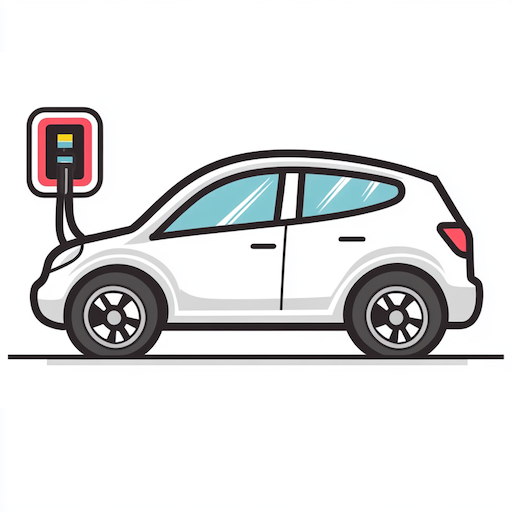- The 2026 JAC Hunter PHEV was unveiled at the Melbourne Motor Show, signaling a new standard in hybrid utility vehicles.
- Powered by a turbocharged inline four-cylinder engine and a lithium-ion phosphate battery, it delivers 385kW and 1000Nm of torque.
- It overcomes competitors like the BYD Shark 6 and Ford Ranger PHEV, setting a high benchmark for power output.
- The vehicle offers up to 100 kilometers of electric-only range with simple charging and eco-friendly driving experiences.
- A vehicle-to-load system enhances functionality by allowing the vehicle to power external devices, making it versatile for work and emergencies.
- Sleek design with classic T9 aesthetics incorporates modern touches like alloy wheels and a tech-packed interior.
- Safety features include adaptive cruise control and a 360-degree camera, ensuring secure navigation.
- Production to start by late 2025 for an early 2026 launch in Australia, with specifications and pricing to be announced.
From the bustling floors of the Melbourne Motor Show emerges a formidable contender that promises to redefine the standards of hybrid utility vehicles. With an audacious debut, the 2026 JAC Hunter PHEV signals an electrifying shift in the landscape of plug-in hybrid utes. Cloaked in the familiar silhouette of its T9 predecessor, this vehicle is anything but ordinary beneath its rugged exterior.
Imagine a beast under the hood—an inline four-cylinder turbocharged power plant working harmoniously with a lithium-ion phosphate battery to deliver an extraordinary combined output of 385kW and a titanic 1000Nm of torque. This monstrous capability sets a new benchmark, leaving rivals like the BYD Shark 6 and Ford Ranger PHEV trailing in its wake.
The Hunter PHEV does not merely boast power; it offers versatility that caters to both adventure seekers and eco-conscious drivers. Charging is as easy as plugging into a standard wall outlet, propelling the ute up to 100 kilometers on electricity alone before any fuel is burned. This clever interplay between electric and petrol ensures a greener footprint without compromising on the thrill factor.
Further impressing with its ingenuity, the JAC Hunter PHEV incorporates a vehicle-to-load system. This feature turns the ute into a mobile power hub, enabling it to energize anything from power tools on a worksite to gadgets in a blackout. Such practicality ensures that this brute is as functional off the road as it is commanding on it.
Despite its pioneering inner workings, the Hunter PHEV adopts a stealthy approach by retaining the classic aesthetics of the T9, with subtle enhancements like bespoke alloy wheels and eye-catching red brake calipers. Its interior mirrors functionality and sophistication, housing a 10.4-inch infotainment hub and a modern 10.25-inch digital instrument panel—essentials for the tech-savvy traveler.
Safety, often an afterthought for such muscular machines, is prioritized with features like adaptive cruise control and a 360-degree camera ensuring peace of mind as one navigates through both rugged terrains and cityscapes.
Scheduled for production as 2025 draws to a close, the JAC Hunter PHEV is poised to hit Australian roads early in 2026. With final specifications and pricing soon to be declared, interest is expected to soar, and with good reason. This isn’t just a hybrid ute; it’s a bold statement reasserting that the future of utility vehicles can be powerful, intelligent, and environmentally considerate—a trifecta that makes the world of automotive a little bit brighter and a lot more exciting.
Introducing the Game-Changer: Why the JAC Hunter PHEV Stands Out
Unpacking the Hunter PHEV: Beyond the Melbourne Motor Show
The 2026 JAC Hunter PHEV captivated audiences at the Melbourne Motor Show, heralding a new era for hybrid utility vehicles. Beneath its rugged exterior lies a powerhouse designed to invigorate the automotive landscape, particularly in the plug-in hybrid market. Here, we delve into aspects that weren’t fully explored in initial reports to provide a comprehensive understanding of what makes this vehicle truly remarkable.
In-Depth Specifications and Innovations
– Powertrain Performance: The JAC Hunter PHEV harnesses an inline four-cylinder turbocharged engine paired with a lithium-ion phosphate battery. This combination results in a staggering 385kW of power and 1000Nm of torque. The ability to reach up to 100 kilometers solely on electric power offers a significant advantage for reducing emissions and fuel consumption.
– Vehicle-to-Load Capability: A unique feature, the vehicle-to-load technology, transforms the ute into a mobile power source. This is ideal for outdoor enthusiasts or professionals who require power tools at remote sites. It underscores the vehicle’s practical versatility.
– Eco-Friendly Design: The incorporation of a plug-in hybrid system speaks to JAC’s commitment to sustainability. By blending electric and petrol power, the Hunter PHEV achieves reduced carbon emissions without sacrificing performance.
Comparisons and Industry Impact
– Market Competition: Rivals such as the BYD Shark 6 and Ford Ranger PHEV are currently lagging behind in terms of both torque and electric-only range. The Hunter PHEV’s specs suggest it could become a benchmark for future plug-in hybrid trucks.
– Safety Features: Advanced safety technologies, including adaptive cruise control and a 360-degree camera, are standard, enhancing the vehicle’s appeal to families and safety-conscious drivers.
Real-World Applications and Trends
– Lifestyle Application: The Hunter PHEV is an excellent choice for adventure seekers and those living in rural areas. Its ability to function as an off-grid power source is also attractive to campers.
– Sustainability Trends: As consumers increasingly prioritize eco-friendly choices, the Hunter PHEV’s green credentials make it a timely addition to the market. This aligns with broader trends toward hybrid and electric vehicles in Australia and beyond.
Pricing and Market Outlook
While pricing details have yet to be announced, initial interest suggests the Hunter PHEV will capture a substantial market share upon release. With production slated to begin in late 2025 and a launch expected in early 2026, the vehicle is anticipated to be competitively priced alongside other leading hybrids in its class.
Actionable Recommendations
1. Consider Sustainability: If you’re in the market for a new vehicle, prioritize models that offer an environmentally friendly edge, like the Hunter PHEV.
2. Explore Incentives: Look into government incentives or rebates for hybrid vehicles that might apply to the Hunter PHEV in your area.
3. Assess Your Needs: Evaluate your lifestyle needs—whether off-road prowess, towing capacity, or urban commuting efficiency is your priority, the Hunter PHEV caters to a diversifying range of consumer demands.
For more information on automotive trends, vehicle specifications, and eco-conscious driving, visit the JAC Motors official site.
Conclusion
The 2026 JAC Hunter PHEV is set to revolutionize the hybrid vehicle market, combining power, sustainability, and innovation. It’s more than just a utility vehicle; it’s a statement of what the future of driving can be—thrilling, effective, and responsibly engineered. Keep an eye out for the latest announcements and prepare for a vehicle that could redefine your driving experience.













